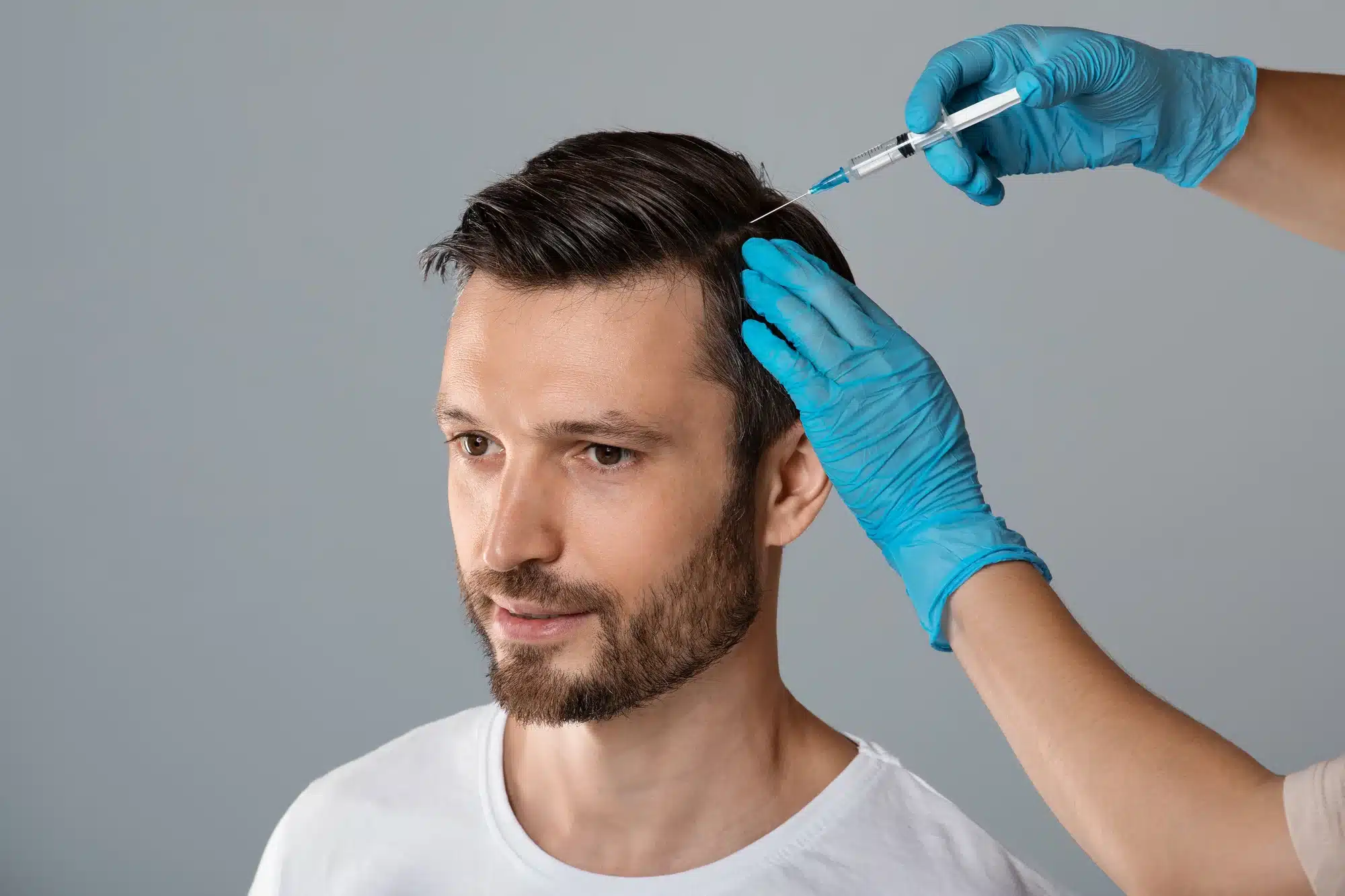
What is PRP and how is it processed?
The blood in our body is mostly liquid plasma, but it is rich in red and white blood cells and platelets. Platelets are the components of our blood responsible for clotting, and they are rich in proteins called growth factors that promote the healing of injuries. To attain platelet-rich plasma (PRP), the substance is separated from a small blood sample via centrifugation.
Platelets have been used for many purposes for several years. One of the more common uses is treating injured athletes; to this point, PRP can help alleviate sprained knees and tendonitis. A study also found that PRP injections can help reduce osteoarthritis knee pain more effectively than saline injections. Evidently, it has exceptional healing properties. This has led to its use in skin care and hair regrowth treatments and products like Fillmed.
Who is PRP treatment for?
Most patients are suitable candidates for receiving PRP treatment, which is often done in conjunction with microneedling treatment due to the minimal downtime associated with these forms of treatment and the fact that the results are universally suited to every patient’s skin needs. Microneedling is used for collagen induction because the micro-injuries on the skin caused by the small needles stimulate the synthesis of new collagen and elastin. PRP treatment has many benefits to the skin: It improves texture and tone and minimizes the appearance of pores, wrinkles, and many types of scarring. It is considered a perfect form of treatment for people just beginning to explore aesthetic treatments, as it can be a highly rewarding form of treatment that quickly refreshes the complexion.
PRP injection and microneedling are also used for the purpose of hair restoration. This particular treatment modality is suitable for both male and female patients that wish to treat their balding and thinning hair. Prior to treatment, a patient has to be evaluated to measure suitability, and they should be given a prescription-strength treatment for their use at home.
PRP treatment for facial rejuvenation
The PRP treatment for skin, which is otherwise known as the “vampire facial,” is gradually increasing in popularity due to its celebrated status on social media, endorsements by celebrities, and the fact that normal patients enjoy benefits from the procedure.
Prior to treatment, patients must complete some paperwork and get comfortable before their blood is drawn. The blood sample does not take very long, but some patients do experience dizziness and lightheadedness after it is completed. Providing water or juice to a patient experiencing any of these side effects can help the symptoms subside rather quickly. After it is drawn, the blood is processed via centrifugation and professional PRP kits, meaning it is spun at a high velocity to separate the PRP from the rest of the blood. The PRP is drawn out with a syringe for use in the treatment. Once the patient’s skin is cleansed and the numbing agent has taken full effect, the treatment begins. The PRP solution is applied to the face, and a microneedling pen is gently rolled over the treatment area. The pen penetrates the dermis and creates micro-injuries. These injuries stimulate collagen production, and the PRP penetrates the skin, allowing for its healing and anti-inflammatory properties to take effect and rejuvenate the skin. Patients should note that their face will be very red and tight after the treatment, but any pain should subside within 24 hours. After a week, the facial skin tends to flake as well.
Some post-care is required, and practitioners should provide instructions about this matter to their patients. If necessary, a second appointment can be arranged so that all the factors in the healing process can be discussed. Practitioners should also advise patients that the initial results of the treatment tend to be visible around two weeks.
PRP injections for hair regrowth
The PRP procedure can be used to treat the scalp just like the face and body; however, in this location, it stimulates the hair follicles and increases hair growth and thickness. Patients should be evaluated more thoroughly to determine if the treatment will be of benefit to them. Otherwise, the steps are quite similar: Blood is drawn and centrifuged to separate the PRP from the rest of the blood, and the scalp is treated with a numbing agent to minimize pain during injection. The PRP is then injected into the scalp and followed by a microneedling treatment to help stimulate collagen and PRP distribution. The scalp will be sensitive and red for up to three days.
After the treatment procedure, patients can be prescribed Hair Fortifying RX homecare solutions, which they can apply up to two times daily to the treated area. The solution is able to further stimulate hair growth to boost the results. What is often recommended to patients is four initial treatments that are each one month apart followed by maintenance treatments every four to six months. Patients should begin to see their results around three months after treatment, and improvements become more apparent as time passes.
Related Articles
Joanna Carr
What Are Silhouette Threads Made Of? – Key Ingredients and Material Composition
Learn what Silhouette Threads are made of—explore their key ingredients, material composition, and how they work to lift and rejuvenate the skin.
Joanna Carr
Entyvio FDA Approval Status
Learn about Entyvio’s FDA approval, its gut-selective action, and the recent subcutaneous formulation approval for ulcerative colitis and Crohn’s dise...
Joanna Carr
Botox For Vaginismus Explained
Interested to learn more about Botox For Vaginismus Applications? Browse Doctor Medica's comprehensive listing of blog posts.


